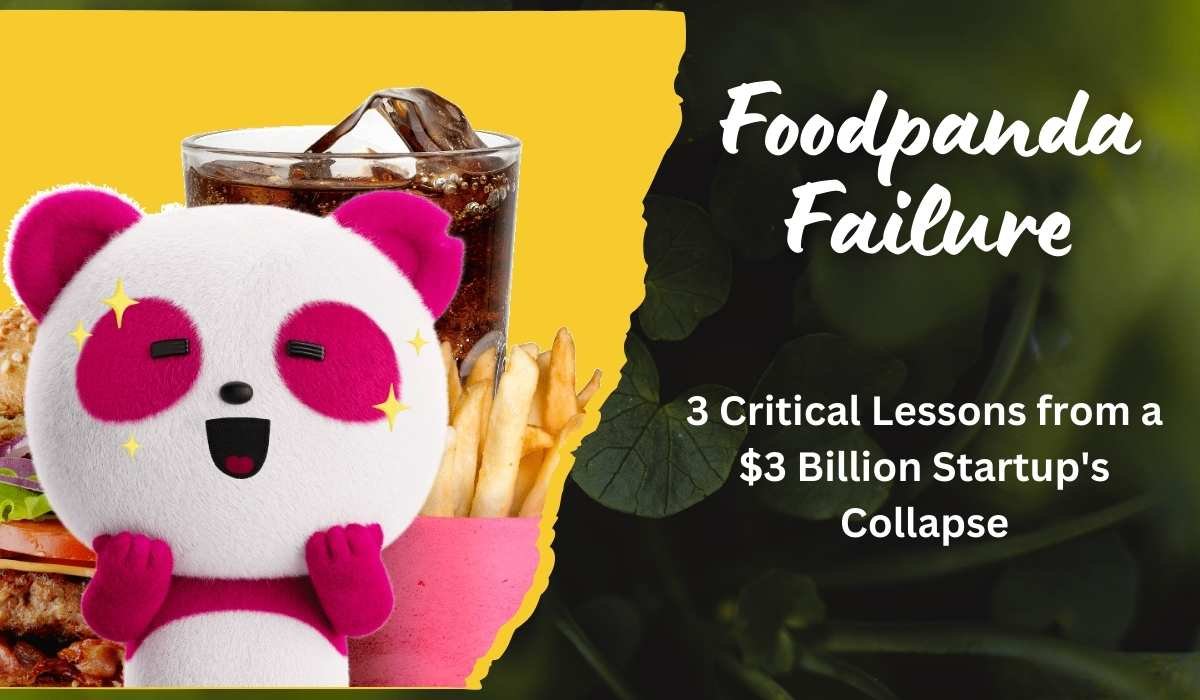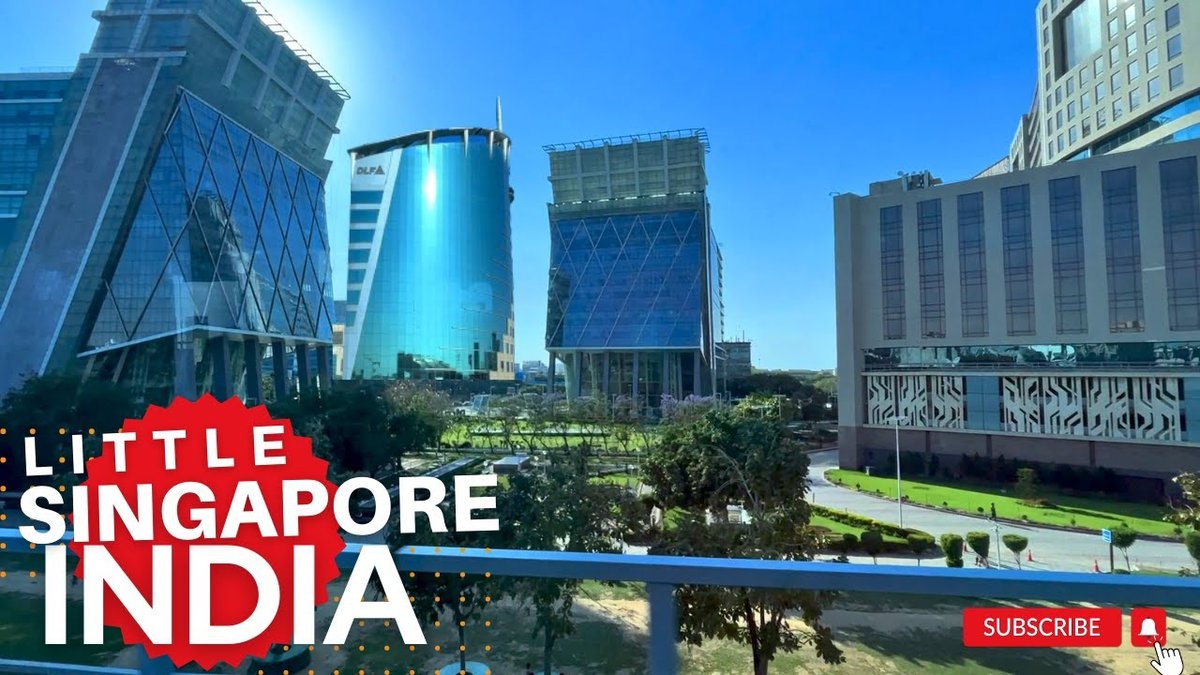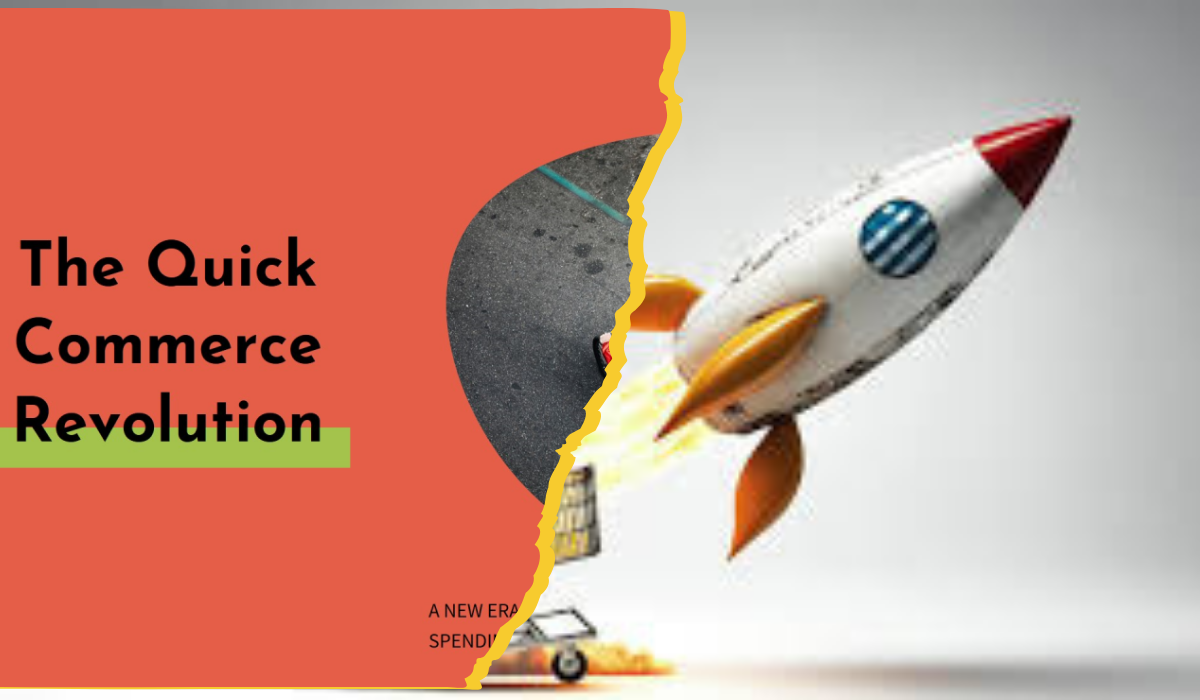Imagine creating a startup that reaches a $3 billion valuation, operates in 45 countries, and processes over 200,000 orders daily, only to see it all collapse, leaving you on the brink of bankruptcy. This is not a fictional story; it’s the real-life saga of Foodpanda, a once-dominant player in the food delivery industry that eventually experienced a spectacular Foodpanda failure.
While many blame Foodpanda’s downfall on competition from Swiggy and Zomato, the truth behind the Foodpanda failure is far more nuanced. This in-depth case study reveals the real reasons behind Foodpanda’s collapse and uncovers three critical business lessons that every entrepreneur and business leader should heed to avoid a similar Foodpanda failure scenario.
The Meteoric Rise Before the Foodpanda Failure
Founded in 2012 by three friends in Berlin—Rolf, Ben, and Rohit—Foodpanda was born out of a desire to fill a significant gap in the market: limited food delivery options. At a time when food delivery was primarily restricted to a few pizza chains, Foodpanda’s vision was revolutionary.
Within two years, the company had expanded its operations to countries like Indonesia, Malaysia, Singapore, and Hong Kong. By its third year, Foodpanda had a presence in over 45 countries—a feat that even established players like Zomato have yet to achieve.
The Pitfalls of Rapid Expansion
Foodpanda’s lightning-fast growth was driven by an aggressive strategy of inorganic expansion. After raising more than $100 million in funding, the company faced a crucial decision:
- Organic Growth: Establish operations and marketing in new territories to capture market share.
- Acquisition: Purchase existing businesses in target markets.
Foodpanda opted for the latter, taking advantage of market skepticism surrounding the then-nascent concept of hyperlocal delivery. They acquired companies like:
Unlock Your Dream Home Today!
Get personalized real estate insights delivered straight to your inbox.
- EATOA in Pakistan
- Delivery Club in Russia
- TastyKhana and Just Eat in India
This rapid acquisition spree transformed Foodpanda into a global giant almost overnight. However, this very strategy would also contribute to the company’s eventual downfall.
Revenue Model and Operational Challenges
Foodpanda’s revenue model was built on four primary streams:
- Listing Fees from Restaurants
- Order Commissions (approximately 23% charged to restaurant owners)
- Delivery Charges collected from customers
- Advertising Fees for premium restaurant listings
While this model appeared robust on paper, Foodpanda’s operational inefficiencies severely hindered its ability to fully capitalize on these revenue streams.
Operational Inefficiencies:
- Unstructured Delivery Process: Unlike competitors like Swiggy, which employed a streamlined delivery system, Foodpanda’s process was convoluted and prone to issues.
- Payment Structure for Delivery Agents: Foodpanda paid its delivery personnel on a per-order basis with daily minimum guarantees, regardless of actual orders delivered. This system was easily exploited.
- Cumbersome Technology Infrastructure: Restaurants often received order notifications late, leading to delays in food preparation and delivery, ultimately resulting in poor customer experiences.
- Lack of Order Tracking: Without proper technology for order management and delivery tracking, Foodpanda struggled to maintain quality control and prevent fraud.
These operational challenges eroded customer trust in the Foodpanda brand, leading to a steady decline in its market share.
The Fatal Mistakes
Leadership Exodus
By 2015, Rocket Internet had become Foodpanda’s largest investor. In 2016, they sold the company to Delivery Hero, who then sold it to Ola less than a year later. During this turbulent period, all of Foodpanda’s co-founders exited the company, leaving it without strong leadership or a clear vision.
Predatory Pricing Without Financial Backing
In an attempt to compete with well-funded rivals like Swiggy and Zomato, Foodpanda launched aggressive discount campaigns like the “Crave Party,” offering 50% off to customers. However, unlike its competitors, Foodpanda lacked the financial resources to sustain such promotions.
Undercapitalization
Foodpanda’s financial situation was dire compared to its competitors. In 2020, while generating revenue of 82 crores, the company’s losses ballooned to over 700 crores, forcing Ola to shut down Foodpanda’s operations in India.
Three Critical Business Lessons
1. A Company is Only as Good as Its People
Lesson: Strong leadership and a committed team are essential for long-term success. When Foodpanda’s founders exited, the company lost its vision and direction.
Application: Invest in building a strong, motivated team and establish clear succession plans to ensure continuity of leadership.
2. Marketing Without Operational Excellence is Business Suicide
Lesson: Attracting customers through discounts and promotions is futile if you can’t deliver a quality experience.
Application: Before scaling your marketing efforts, ensure that your operations can consistently meet or exceed customer expectations.
3. Don’t Compete Without a Competitive Advantage
Lesson: Entering a market dominated by well-funded players without a clear differentiator is a recipe for failure.
Application: Identify and develop your unique selling proposition before attempting to compete in saturated markets.
The rise and fall of Foodpanda serves as a powerful cautionary tale for entrepreneurs and business leaders. While rapid growth and expansion can be exhilarating, they must be built on a foundation of operational excellence, strong leadership, and sustainable competitive advantages.
By learning from Foodpanda’s mistakes and applying these critical business lessons, you can avoid similar pitfalls and build a more resilient, successful enterprise. Remember, in the world of business, it’s not just about how quickly you can grow—it’s about how well you can sustain that growth over the long term.
Read More such Case Studies
Foodpanda was founded in 2012 to fill a gap in the market for food delivery options, expanding quickly to 45 countries within just a few years and leveraging aggressive acquisition strategies.
Foodpanda's downfall was influenced by operational inefficiencies, lack of strong leadership after the founders exited, predatory pricing without sufficient financial backing, and a failure to maintain competitive advantages.
Foodpanda's revenue model consisted of listing fees from restaurants, order commissions, delivery charges from customers, and advertising fees for premium listings.
Foodpanda dealt with an unstructured delivery process, a flawed payment structure for delivery agents, cumbersome technology infrastructure, and a lack of order tracking, all of which eroded customer trust.
A key lesson is that strong leadership and a committed team are essential for success; the exit of Foodpanda's founders resulted in a loss of vision and direction for the company.
The case of Foodpanda illustrates that attracting customers through promotions is ineffective if the company cannot deliver a quality experience, emphasizing the need for operational excellence.
Foodpanda's failure highlights the importance of having a competitive advantage; attempting to compete without a clear differentiator in a market dominated by well-funded players is risky.
In 2020, Foodpanda generated revenue of 82 crores but faced losses exceeding 700 crores, leading to the decision by Ola to shut down its operations in India.
Foodpanda opted for aggressive inorganic growth through acquisitions of existing businesses in various markets, rather than focusing on organic growth and building its own operations.
Entrepreneurs can learn the importance of operational excellence, the need for strong leadership, and the necessity of having a competitive advantage before entering saturated markets.
Foodpanda was founded in 2012 to address the limited food delivery options available at the time. Within two years, the company expanded to multiple countries, quickly capturing market share and achieving a presence in over 45 countries.
Foodpanda's collapse was attributed to several factors including rapid and aggressive expansion, operational inefficiencies, leadership changes, predatory pricing without sufficient financial backing, and undercapitalization.
Foodpanda's revenue model included listing fees, order commissions, delivery charges, and advertising fees. However, operational inefficiencies like unstructured delivery processes and payment structures for delivery agents hindered the company's ability to effectively capitalize on these revenue streams.
Foodpanda faced a leadership crisis when its co-founders exited the company during a turbulent ownership transition. This lack of strong leadership contributed to the company's loss of vision and direction.
Foodpanda launched aggressive discount campaigns to compete with well-funded rivals but lacked the financial resources to sustain these promotions, leading to significant financial losses.
The case illustrates that attracting customers through marketing is ineffective if the company cannot deliver a quality experience. Businesses should ensure their operations can meet customer expectations before scaling marketing efforts.
Key lessons include the importance of strong leadership, ensuring operational excellence before marketing, and developing a competitive advantage before entering saturated markets.
Foodpanda's aggressive inorganic expansion through acquisitions created a convoluted operational structure that was difficult to manage, leading to inefficiencies and a decline in customer trust.
While competition from rivals like Swiggy and Zomato was significant, the primary reasons for Foodpanda's downfall were rooted in its internal challenges rather than just external competition.
Startups should maintain a sustainable financial model and avoid aggressive pricing strategies that they cannot support in the long run, as seen in Foodpanda's case where losses far outpaced revenue.
DISCLAIMER
The information provided on this website is for general informational purposes only. While we strive to keep the content up-to-date and accurate, we make no representations or warranties of any kind, express or implied, about the completeness, accuracy, reliability, suitability, or availability of the information, products, services, or related graphics contained on this website.
In no event will we be liable for any loss or damage including without limitation, indirect or consequential loss or damage, or any loss or damage whatsoever arising from loss of data or profits arising out of, or in connection with, the use of this website.
Real Estate Investment Risks
Real estate investments involve significant risks and market volatility. Property values, rental rates, and market conditions can fluctuate. Past performance is not indicative of future results.
Before Making Real Estate Decisions
Before making any real estate decision, we strongly advise you to:
- Conduct thorough due diligence
- Consult with qualified legal, financial, and real estate professionals
- Carefully review all relevant documents and contracts
- Consider your personal financial situation and investment goals
This website does not provide legal, financial, or investment advice. All content is for informational purposes only and should not be construed as professional advice or recommendations.
By using this website, you acknowledge and agree to these terms. We reserve the right to modify this disclaimer at any time without notice.







